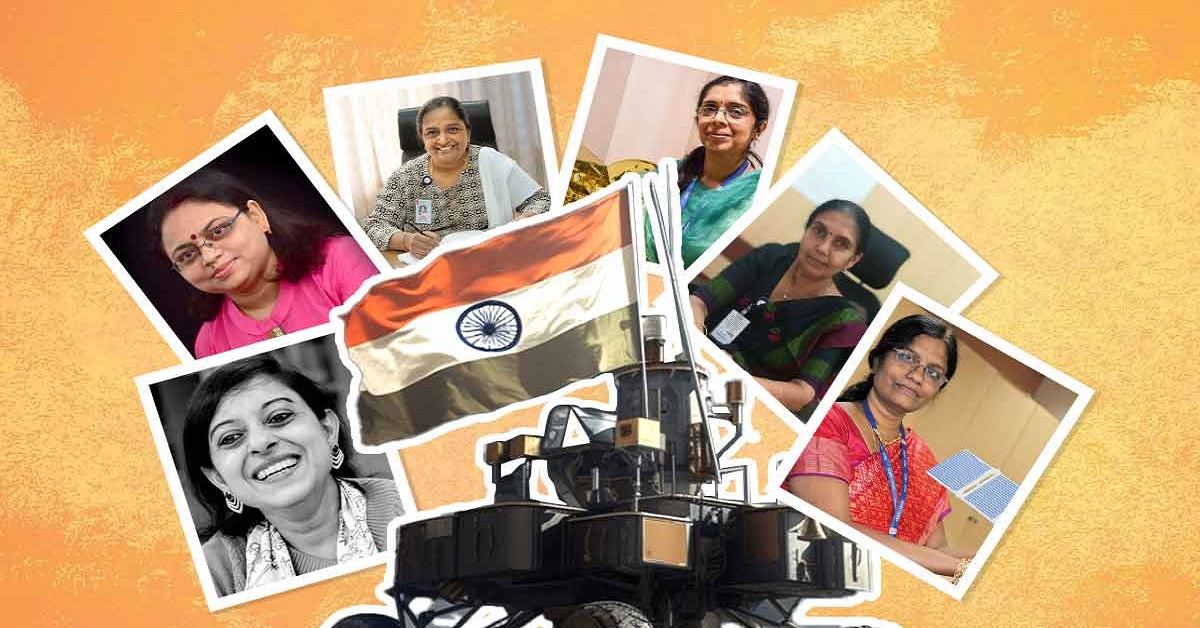On August 23, India’s Chandrayaan-3 successfully landed on the moon’s South Pole, making India the first country to reach the unchartered Southern part of the moon. Additionally, this achievement also made India the fourth country, after the US, China, and the former Soviet Union, to softly land on the moon. With the triumphant landing of Chandrayaan-3 on the moon’s surface, the Indian Space Research Organisation (ISRO) has successfully achieved yet another remarkable milestone.
This monumental leap for India’s space exploration prowess was the result of many minds and many scientists of which women formed an essential part. In addition to historic feat symbolising India’s space prowess, the growing role of women in space exploration has also inspired future generations of India, showcasing the extraordinary role that Indian women have been playing since time immemorial.
As provided by a senior official of ISRO to Economic Times, “There are about 54 female engineers/scientists who worked directly in the Chandrayaan-3 mission. They are associate and deputy project directors and project managers of various systems working at different centres.”
Ritu Karidhal Srivastava, also known as the ‘Rocket Woman of India’, also played a crucial part of the team behind India’s ambitious moon mission is. Dr Karidhal is a senior scientist at the ISRO who was the Mission Director of Chandrayaan-2 and the Deputy Operations Director of Mangalyaan, India’s Mars Orbiter Mission (MOM). As a senior scientist at ISRO, her contributions have been instrumental in India’s space exploration endeavours.
Karidhal joined ISRO in November 1997 and has since worked on a number of noteworthy missions and served as operations director for a number of different programs. APJ Abdul Kalam, a former president of India, had presented her with the “ISRO Young Scientist Award.” She had also been awarded with the “ISRO Team Award for MOM in 2015,” and the “ASI Team Award.” Additionally, she was recognized as a “Women Achiever in Aerospace” in 2017 by the Society of Indian Aerospace Technologies & Industries (SIATI).
Kalpana K., who served as the Chandrayaan-3 mission’s deputy project director, is another notable and prominent participant in this historic endeavour. She also invested her time and energy into inventing and improving lander systems. Since 2003, Kalpana has been working for ISRO as a scientist. In her early years at ISRO, she contributed to a number of satellite projects that resulted in the launch of communication and remote sensing satellites. In addition, Kalpana worked closely on the Chandrayaan-2 project and was a key member of the team that developed the Mars Orbiter project (Mangalyan).
According to an article of SheThePeople, Kalpana’s talent shined brightest during the Chandrayaan-3 project, where her proficiency in designing and optimizing lunar lander systems played a crucial part in resolving difficult engineering issues. In a speech addressed to the ISRO and the nation as a whole following the successful landing of the Rover on the surface of the Moon, Kalpana beamingly proclaimed, “We have landed the Rover on the Moon!”
She had further said, “This will remain the most memorable and the happiest moment for all of us and for our team at Chandrayaan-3. We have achieved our goal flawlessly from the day we started rebuilding our spacecraft after the Chandrayaan-2 experience; it has been breathe in and breathe out Chandrayaan-3 for our team. Starting from the reconfiguration and all the assemblations we have conducted meticulously; this has only been possible because of the team’s immense effort.”
Chandrayaan-3’s tremendous achievement highlights the expanding role of Indian women in the realm of space exploration. Ritu Karidhal Srivastava and Kalpana K.’s outstanding accomplishments, as well as those of many others who participated in the moon mission, are evidence that gender boundaries are being broken down, allowing for the flourishing of various viewpoints inside ISRO and the larger scientific community.
The achievements of women featured above serve as an inspiration to numerous young minds desiring to contribute to the cosmos, as well as those who wish to reach the sky in other sectors, as India continues to demonstrate its dominance in space exploration. Future generations of scientists and explorers in India and abroad will be inspired by and paved the way by the vital contributions made by women to the area of space exploration and their unshakable dedication to scientific excellence.
Related:
How and why Indian women are made to go hungry
Muslim Women’s Quest for Gender-Just Laws
Against overwhelming odds, women entrepreneurs in Kashmir Valley offer hope
Battling the Indian sports industry: the cries for justice by women
Women Protesters Join Mazdoor-Kisan Sangharsh Rally in Big Numbers
A right half won, evolution of women’s right to property under the Hindu Succession Act

